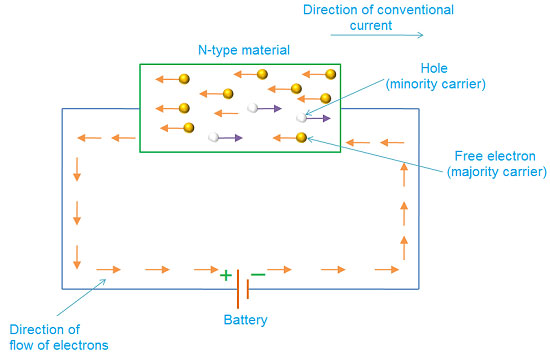Let us see what happens if we connect a battery across an N type semiconductor as shown in below figure. The free electrons and holes experience the force towards the battery terminals. The free electrons will tend to move towards the positive terminal of the battery. Holes are also apparently shifted from one covalent bond to other towards the negative terminal of the battery. Thus, a movement of free electrons takes place in a direction opposite to that of hole movement.
In an N type semiconductor, the current flows due to the movement of free electrons and holes. Since the free electrons being the majority carriers and holes being the minority carriers, the net current will be due to the majority carriers i.e. free electrons. Thus, in an N type semiconductor, a major part of electric current flows due to the movement of free electrons. This current is known as drift current. The direction of conventional current will be the direction of movement holes.

